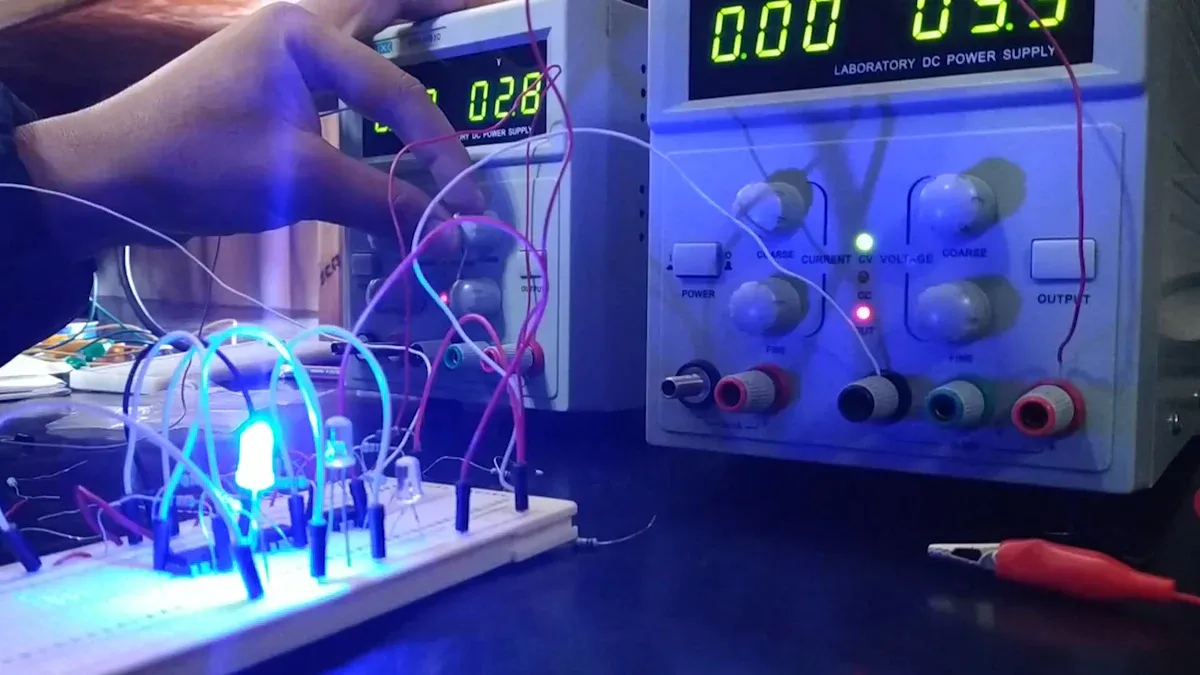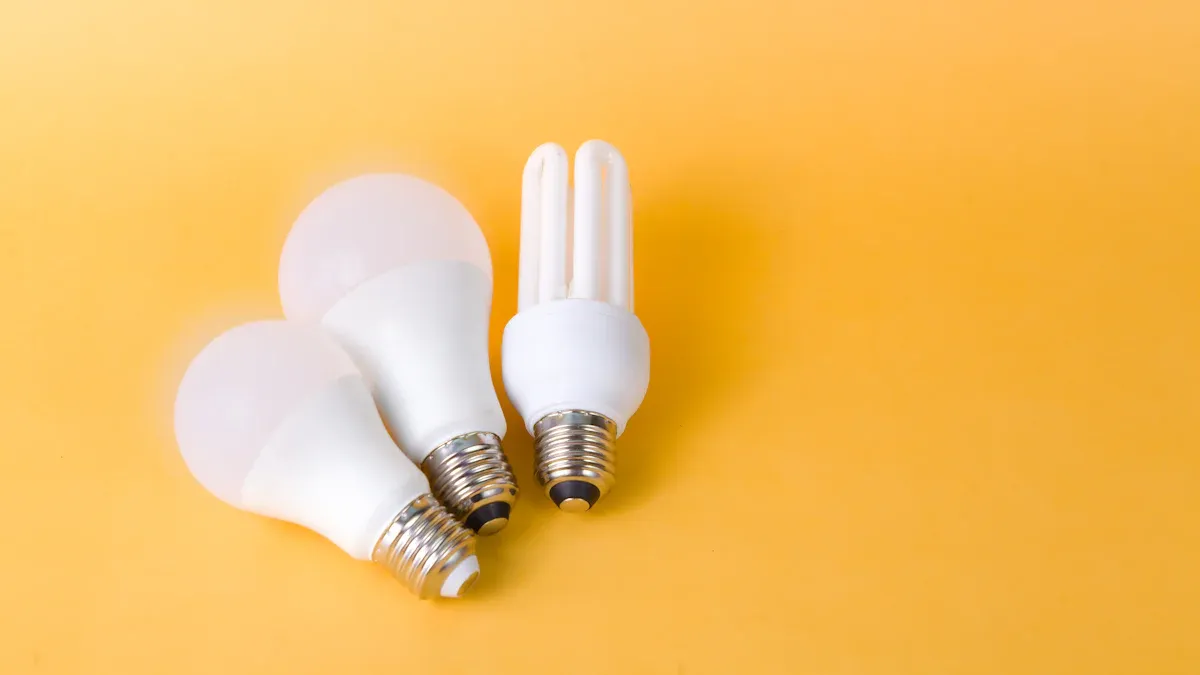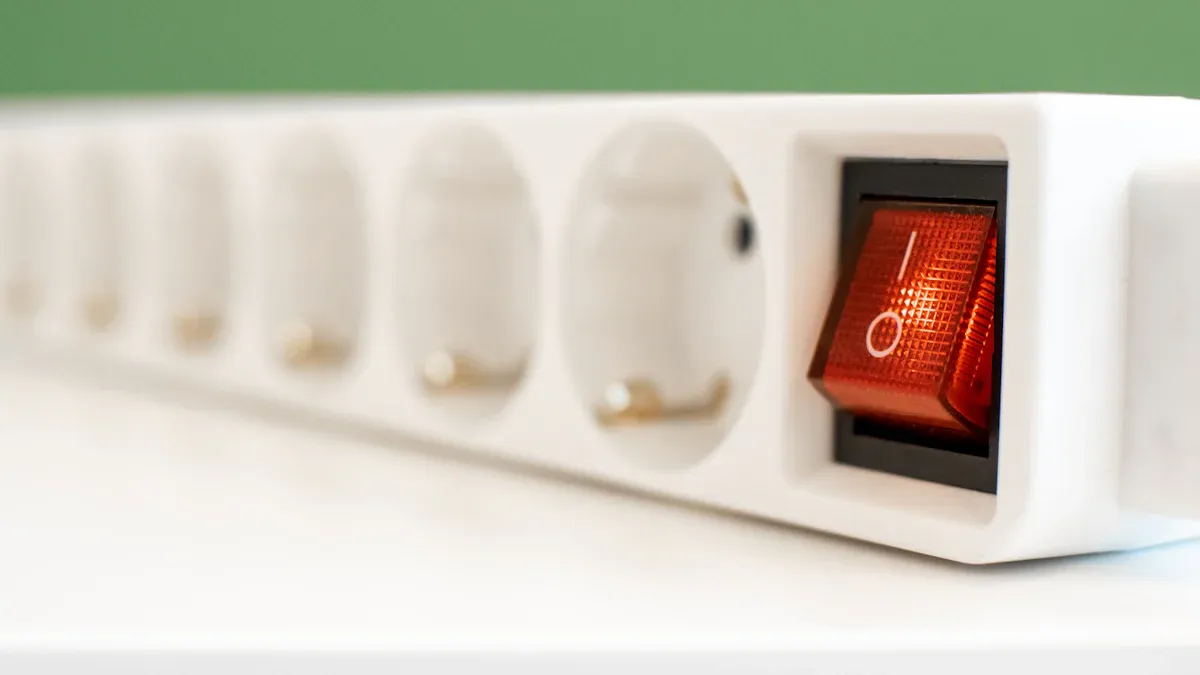How to Choose the Right LED Power Supplier

Choosing the right LED Power Supplier for your home starts with matching the voltage and wattage to your LED Light. Many people pick the wrong power supply, and this can cause problems.
LED lamps with built-in power supply circuits often have high current distortion. Some lamps have a total harmonic distortion index over 100%. This can make the power factor drop below 0.5. It can also make the peak factor go above 4.5. Bad matching can make power quality worse when you use many lamps.
Not paying attention to voltage is a common mistake.
If the voltage does not match, lights can flicker, get too hot, or burn out early.
Always make sure your product matches the voltage of your LED lighting.
Picking the right one keeps your system safe and working well. Think about your setup and what you need before you choose. You can find more in our About Us section.
Key Takeaways
Always make sure the voltage of your LED lights matches the power supply. This helps stop flickering and overheating.
Add up the total wattage of your LEDs. Then add 20% more to pick the right power supply size.
Pick a power supply with a high efficiency rating. This saves energy and makes less heat.
Look for safety certifications on your power supply. This shows it meets safety and environmental rules.
Think about the manufacturer's reputation. This helps you get a quality and reliable LED power supply.
LED Requirements

LED Type
You will find many types of LEDs in homes and businesses. Each type has its own purpose and power needs. Here are some common LED types you might use:
SMD LEDs work well for strip lights and displays.
COB LEDs give strong light for work areas.
High-power LEDs shine bright in stadiums and outdoors.
RGB LEDs let you change colors for decoration.
Filament LEDs look like old bulbs for style.
Smart LEDs connect to apps for easy control.
LED panels spread light evenly in offices.
GU10 LED bulbs focus light for spotlights.
E26/E27 base LED bulbs fit most home fixtures.
Different LED types need different voltages and may support dimming. You must match your LED Power Supplier to the type of LED you use. Some LEDs last up to 50,000 hours, so picking the right power supply helps them reach their full lifespan.
Voltage Options
You need to check the voltage of your LED strips before you buy a power supply. Most strips use 12V, 24V, or sometimes 48V. Using 24V strips often gives better efficiency and less voltage drop, especially for longer runs. The table below shows how voltage affects efficiency and use:
Voltage Type | Efficiency (lm/W) | Key Features |
|---|---|---|
Low Voltage (12V/24V) | Up to 200lm/W | Good for short runs, but voltage drops on long runs. Needs more connections. |
High Voltage (120V/240V) | Up to 180lm/W | Works with mains power, better for long runs, but less efficient. |
If you use the wrong voltage, you risk burning out your LEDs or causing overheating. This can damage resistors and even start a fire. Always match the voltage of your LED strip to your power supply.
Power Calculation
You must know how much power your LEDs need. Add up the wattage of all your LEDs. Then, multiply the total by 1.25 to add a 20% cushion. This keeps your power supply from working too hard. For example, if your LEDs use 80 watts, you should choose a power supply rated for at least 100 watts.
Tip: Use only 80% of your power supply’s rated power. This helps your system last longer and prevents flickering or early failure.
Adding a cushion protects your LEDs and your LED Power Supplier. It keeps everything running safely and smoothly.
Power Supply Options

Constant Voltage
Constant voltage power supplies are used for LED strips. They give a set voltage, like 12V or 24V, to your LEDs. The current changes when you add more LEDs. You need current limiters or resistors to keep your LEDs safe. These supplies are good for small jobs and short runs. They are cheaper and easy to use. If you use too many LEDs, they might flicker or not last as long.
Feature | Constant Voltage | Constant Current |
|---|---|---|
Power Supply | Fixed Current (e.g., 350mA) | |
Voltage Behavior | Stable | Varies with load |
Current Control | Internal resistors | External driver |
Applications | LED strips, signage | Spotlights, downlights |
Efficiency | Lower | Higher |
Brightness Consistency | Variable | Stable |
Tip: Pick constant voltage if you want to save money and have a short setup.
Constant Current
Constant current power supplies give a steady current, like 350mA. The voltage changes depending on the LEDs you use. These supplies work for spotlights and high-power LEDs. They keep the light even and help LEDs last longer. Constant current drivers stop overheating and damage. They cost more but work better for big projects.
Constant current LED strips are best for even brightness and long life. You do not need extra limiters because the driver does the job.
Compatibility
You need to match your power supply to your LED type. If you use the wrong supply, your lights can flicker or burn out. Always check the voltage and power rating before you buy. For wet or outdoor places, pick a supply that keeps water out.
If you use controllers or dimmers, make sure they work with your LED Power Supplier. Wrong controllers can make lights flicker or buzz. Some dimming uses AC power, others use DC power. Make sure your supply works with your dimming style.
Pick the right size supply for good lighting.
Use dimmable supplies if you want to change brightness.
Check all wires and settings before you start.
Note: Checking compatibility helps stop problems like flickering, buzzing, and early LED failure.
LED Power Supplier Selection
Efficiency Rating
When picking an LED Power Supplier, check the efficiency rating first. Efficiency shows how much energy is used for light and how much turns into heat. High efficiency saves money and keeps your lights cooler.
Most LED power supplies are 85% to 95% efficient.
Higher efficiency means less energy is wasted as heat.
If you use 100 watts, 85 to 95 watts power your LEDs.
A 95% efficient supply uses almost all electricity for lighting.
High efficiency lowers your bills and keeps your system safe.
If you want your LED Power Supplier to last and work well, pick one with high efficiency. You will see less heat and better lighting.
Safety Certifications
Safety is important when picking an LED Power Supplier. You need to look for certifications. These show the product meets safety and environmental rules. Here is a table with common certifications and what they mean:
Certification | Description |
|---|---|
UL | Meets electrical safety, performance, and environmental rules. |
CE | Follows health, safety, and environmental protection standards in Europe. |
ENEC | Passes European safety tests. |
FCC | Controls electromagnetic interference in the US. |
RoHS | Contains no harmful substances and supports environmental safety. |
Always check for these marks on your LED Power Supplier. Safety certifications protect you from electrical dangers and help you follow the law. Overload protection is also important. It stops your power supply from getting too hot or breaking.
Tip: A certified LED Power Supplier keeps your lighting safe and gives you peace of mind.
Manufacturer Reputation
You should think about the company that makes your LED Power Supplier. Good brands check quality and follow safety rules. They test their products and give better warranties. Trusted companies make you feel better about your choice.
Well-known brands check quality more.
Good brands give better warranties.
Smaller companies may not test as much.
Insurance can help with warranties and show the brand cares.
Here are some brands known for being reliable and having good features:
Brand | Key Features | Best For |
|---|---|---|
Lambda | High precision output, strong build, great for sensitive setups | Sensitive LED systems, labs |
Philips Advance | Good thermal control, no flicker, dimmable options | Indoor commercial, architectural lighting |
Inventronics | Surge protection, waterproof, programmable output | Street lighting, horticulture |
Osram | Advanced dimming, small size, long life | Museums, galleries, retail |
Delta Electronics | Good heat control, works in tough places | Industrial, harsh environments |
MOSO Power | Smart dimming, surge protection, waterproof | Urban, parking lot lighting |
Pick an LED Power Supplier from a trusted brand. This helps you avoid problems and keeps your system working for years.
Features and Installation
Dimming
Dimming lets you control the brightness of your LED lights. You can create a cozy feeling in your living room or set the right mood in a restaurant. Dimming also helps you save energy and extend the life of your LEDs. You get smooth transitions and steady color, which makes your space look better.
Here are the most common dimming technologies for LED power supplies:
Phase-Cut Dimming: Changes the AC waveform.
Leading-Edge (Triac): Works with older dimmers, good for homes.
Trailing-Edge: Gives smoother dimming, best for new fixtures.
PWM (Pulse Width Modulation): Switches LEDs on and off quickly for precise control.
0-10V Dimming: Uses a low-voltage signal for simple brightness changes, often in offices.
DALI (Digital Addressable Lighting Interface): Lets you control each light and get feedback, perfect for big projects.
Thyristor (Triac) Dimming: Adjusts voltage for easy upgrades.
Smart & Wireless Dimming: Uses wireless tech for easy control from your phone.
Tip: Choose a dimmable power supply if you want flexible lighting and a better atmosphere.
Weatherproofing
If you install LED power supplies outdoors, you must protect them from water and dust. Moisture can cause short circuits and make your lights fail. Corrosion can damage parts over time. Water can also warp plastic parts and cause stress.
Using sealed power supplies with an IP67 rating keeps out water and dust. These supplies last longer and work better in tough weather. You do not need extra boxes, so your system stays cool and safe.
Weatherproofing Benefit | How It Helps You |
|---|---|
Stops moisture damage | Prevents short circuits |
Blocks corrosion | Keeps parts strong |
Reduces overheating | Extends power supply life |
Maintenance
Good maintenance keeps your LED power supply working for years. You should install it in a cool, dry place with good airflow. Check the wires and connections often. Clean off dust and dirt to avoid problems. Replace old batteries when needed. Do not overload the power supply. Plan regular checks to catch issues early.
Use thick wires to stop voltage drop.
Place the power supply in the center for best results.
Note: Regular care and smart installation help your LED system shine bright and last longer.
Picking the right LED Power Supplier takes a few steps. First, you need to check what voltage and current your LEDs need. Next, look at how efficient each power supply is and how long it should last. Make sure to check the warranty too. Try to find a good balance between price and quality. Stay away from cheap products that might break. Look at the dimming choices and think about how you will install everything. Always check for safety marks and features that protect your system.
Factor | Why It Matters |
|---|---|
Helps save energy and money | |
Gives you better quality | |
Matching Specs | Stops your LEDs from breaking |
Look over your setup before you buy anything. If you are not sure, ask someone who knows about LEDs. Making smart choices helps your lights stay safe and last a long time.
FAQ
What happens if I use the wrong voltage power supply?
Using the wrong voltage can damage your LEDs. You may see flickering, overheating, or even early failure. Always match the voltage of your power supply to your LED lights.
How do I know if my power supply is big enough?
Check the total wattage of your LEDs. Add a 20% cushion. Your power supply should handle this number. If you use 80 watts of LEDs, pick a supply rated for at least 100 watts.
Can I use one power supply for multiple LED strips?
You can use one power supply for several strips if the total wattage does not exceed the supply’s rating. Make sure all strips use the same voltage. Use thick wires for longer runs.
Do I need a waterproof power supply for outdoor LEDs?
Yes, you need a waterproof (IP67 or higher) power supply for outdoor use. This protects your system from rain, dust, and moisture. Indoor supplies can fail quickly outside.
See Also
Tips for Selecting the Best LED Replacement Lights for Any Space
Guidelines for Picking LED Lighting for Display Cases Effectively
Finding the Ideal LED Lighting Solutions for Your Outdoor Areas

